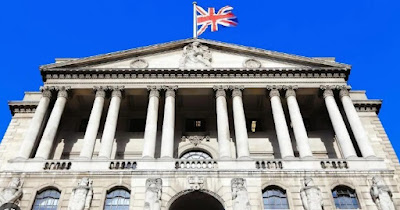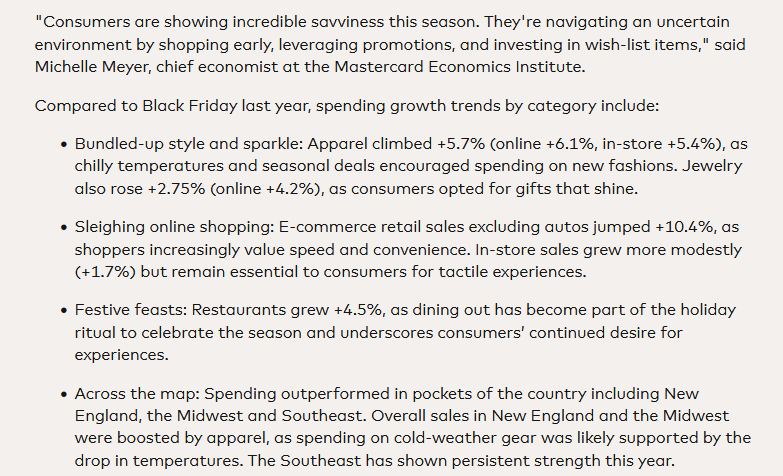Overview: The US dollar has come back bid today. It is rising by 0.25%-0.50% against all the G10 currencies. The Canadian dollar is the most resilient today, which is often the case when the greenback is firm. The Australian dollar is off the most after reaching its strongest level since late February yesterday. Sterling is a middling performer today ahead of the anticipated Bank of England rate hike. The dollar is also firmer against most emerging market currencies, with central European currencies down the most, dragged lower by the euro, which fell slightly through $1.1920 to reach its lowest level since April 19.
Equities struggled in the Asia Pacific region but are firm in Europe, where the Stoxx 600 is up about 0.5% as it tries to snap a two-day decline. US futures are also trading higher. Benchmark 10-year yields in the Europe and the US are a little softer. The 10-year Gilt yield is off a little more than two basis points to 3.77%. That still leaves the yield up a dozen basis points. The 10-year US Treasury yield is off slightly to 3.43%, which is about five basis points higher over the past week. A firmer dollar and softer rates are taking the shine off gold today. It is holding above a three-day low near $2020. June WTI also continues to consolidate in a $71-$74 range. The consolidation looks constructive from the technical perspective. An upside break could target $76-$78.
Asia Pacific
China reported April consumer and producer prices today. The trends remain intact. Consumer inflation slowed to 0.1% year-over-year from 0.7% in March. The median forecast in Bloomberg was for a 0.3% pace. It is the lowest since February 2021. A year ago, it stood at 2.1%. Most observers seem to attribute the low inflation to weak demand, but this seems too simple by far. First, the soft food prices (0.4% year-over-year), which play an important role, are not about demand. Second, it is also a function of excess capacity, which is a form of surplus savings, which seems often overlooked for the sake of portfolio and direct investment. The excess capacity in autos, for example, encourages exports, and is leading to price competition at home. Producer prices have been falling, not just rising slowly, for seven consecutive months through April. They fell by 3.6% year-over-year, a larger decline than expected and the weakest since May 2020. Was it so long ago that some bank economists argued that China's producer prices fed into US consumer prices? Falling producer prices is also partly a symptom of excess capacity, but they also translate into pressure some sectors' income and profits. Separately, China also reported a steeper slowing of lending. Aggregate lending slowed to CNY1.22 trillion in April, well below the CNY2 trillion expected. The combination of weaker price pressures and slower lending boosts speculation that officials will ease policy before midyear.
Japan's current account recorded a nearly JPY2.3 trillion surplus in March, a little smaller than expected. In March 2022, the surplus was JPY3.24 trillion. In March 2019, before Covid, the current account surplus was near JPY2.84 trillion. Japan's surplus is not driven by its trade account. In balance-of-payment terms, it recorded a JPY455 bln trade deficit. In fact, it has been running a trade deficit without disruption since November 2021. Forty years ago, Japan was the large Asian country that American policymakers and economists argued was the cause of the US trade deficits. Some of the arguments have changed, but substitute China for Japan, add the ideological dogma, and the same general story is told. Fast-forward, and one can imagine Chinese and foreign companies shift some production out of China. Its trade surplus falls, while the US deficit remains and possibly grows.
Some tried linking yesterday's sharp dollar losses against the yen to reports that a couple of Japanese lifer insurance companies were selling US Treasuries. Yet the foreign exchange impact should be minimal as it was clear in the report that they were selling bonds that were hedged. The investment plans of the sector were largely known in March and April. Instead, the sharp decline in US rates after the CPI report offers a more robust explanation, it also aligns with the action better. The dollar's drop began around the CPI and the lifer insurer story broke (Nikkei's tweet) almost two hours later. The dollar made a marginal new four-day high yesterday near JPY135.50 before selling off. It reached almost JPY134.10 in the North American afternoon, around the same time US 10-year yields bottomed, about 10 bp off the high. It recovered from a five-day low slightly below JPY134.00 to reached JPY134.85 in the European morning. Options for $1.23 bln at JPY135 expire tomorrow. The Australian dollar rose to almost $0.6820 yesterday, the highest since late February, but was again unable to settle above $0.6800. It has been sold back to around $0.6720 today, (200-day moving average is ~$0.6625). Nearby support is seen near $0.6700 and then $0.6670. The greenback rose to new two-month highs against the Chinese yuan today near CNY6.9420. It is the fourth consecutive advance, which follows a five-sessions decline. The PBOC set the dollar's references rate at CNY6.9101 compared with expectations near CNY6.9120. Lastly, note that the Hong Kong dollar rose to seven-week highs before succumbing to the US dollar's strength. A rise in Hong Kong's interbank rate to the highest in more 15 years renewed the attractiveness of the HKD.
Europe
The Bank of England is center stage today. The swaps market is nearly as confident of a 25 bp hike as it can be, and it has a better than an 80% chance of another hike at the June 22 meeting. The two hikes would bring the base rate to 4.75%. What happens after June is less clear. The market leans toward a final hike to 5.0%, but it is only about half discounted. The BOE may revise away or at least soften its recession talk. Stagnation may be a more apt description. Consider the quarterly GDP reads for the last three quarters: Q2 22 0.1%, Q3, -0.1%, and Q4 0.1%. Tomorrow is the first estimate of Q1 23 GDP, and yes, it looks to be around 0.1%. It seems ironic that it appears that it was government spending that helped the UK economy to avoid a contraction in Q1, especially given last September's turmoil during Truss's brief stay at 10 Downing Street. The monthly GDP data showed a better-than-expected 0.4% expansion in January (after a 0.5% contraction in December 2022) and flat February. March's figure will also be reported tomorrow, and it may have been flat too.
Sterling's grind higher has been impressive. Yesterday, it rose through last May's high, near $1.2680. It is approaching the $1.2760 target, the (61.8%) retracement of sterling's slide the $1.4250 area seen in June 2021 to the record low in last September near $1.0350. In the following quarter, it recovered to almost $1.2450 but did not rise above there until April. The next important chart area is around $1.30. It has been knocking on the upper Bollinger Band for the past couple of weeks, which is found now around $1.2670. Other momentum indicators are also getting stretched. In the 11 weeks since the end of February, sterling has risen in nine. It has been sold to about $1.2565 today in the run-up to the BOE meeting. Sterling also looks overplayed against the euro as well after highs for the year yesterday. A convincing break of $1.2550 could signal a test on the $1.2475-$1.2500 area in the coming days. The euro's technical tone has weakened, with two closes below the 20-day moving average and the five-day moving average falling below the 20-day moving average. The euro held support near $1.0940 yesterday but has been pushed slightly below $1.0920 today. It has not been at these levels since April 19. The next area of technical support is in the $1.00875-$1.0900 area.
America
The US April CPI was in line with expectations and the dollar was sold. In the absence of an upside surprise, many participants feel more confident about a Fed pause in June (and finished with the tightening cycle that began in March 2022). The headline rate rose by 0.4% for a year-over-year rate of 4.9%, which is down from 5% in March. The core rate also rose by 0.4%, but its 12-month rate is a bit stickier at 5.5% (down from 5.6% in March). The measure that Fed Chair Powell frequently cites, core services excluding housing rose by 0.1% for a 5.1% year-over-year pace, the slowest since last July. Looking ahead to the May and June reports, there is good reason to expect the headline pace to fall toward 3.5% by the end of the first half. Recall that in May and June 2022, CPI rose by 0.9% and 1.2% respectively. Assume for the sake of the argument that the monthly rate averages 0.4% in both months, then the year-over-year rate could fall by 1.3 percentage points. However, there are two caveats. First, the base effect for the second half of the year is considerably less favorable. This means that the slowing of inflation may stall. Second, the annualized pace of CPI will still disturb many Fed officials. The headline rate has risen at a 5.2% annualized rate (core rate equivalent is 5.1%) through April.
Today's producer price report typically has less impact than CPI even though some components are inputs into the PCE deflator. PPI peaked last March at the same time that the Fed began to hike (~11.7%). It is seen slipping to 2.5% from 2.7%. last month. In April 2019, it was at 2.4%. Producer inflation sure looks temporary. Weekly initial jobless claims may get passing notice, but after last week's monthly employment report, it is unlikely to add substantively to the information set. The four-week moving average stood near 239k in the last week of April. It has been hovering around 240k for the last several weeks. At the end of 2019, the four-week moving average was about 235k. Fed President Kashkari and Governor Waller speak this morning. Both are seen among the most hawkish voices at the Fed now.
The US dollar has found a base in the CAD1.3300-35 area. It has pushed a little above yesterday's CAD1.3415 high. A move above the CAD1.3435 area would re-target CAD1.3500. The Canadian dollar typically does better on the crosses in a firm US dollar environment. The greenback finished last week near CAD1.3375. Meanwhile, the irrepressible Mexican peso edged to a new six-year high, with the greenback slipping to around MXN17.5350. It has caught a bid to approached MXN17.60 in the European morning. It is in obvious technical need to consolidate, and a move back toward MXN17.75 would be constructive. The low from 2017 is near MXN17.45. Next week, the central bank meets, and the softening of inflation and the strength of the peso may encourage a pause (end) to the tightening cycle that has lifted the overnight target rate to 11.25%, with headline CPI at 6.25%.
Full story here Are you the author? Previous post See more for Next post
Tags: #USD,Bank of England,China,Currency Movement,Featured,federal-reserve,HK,Japan,newsletter,US



























